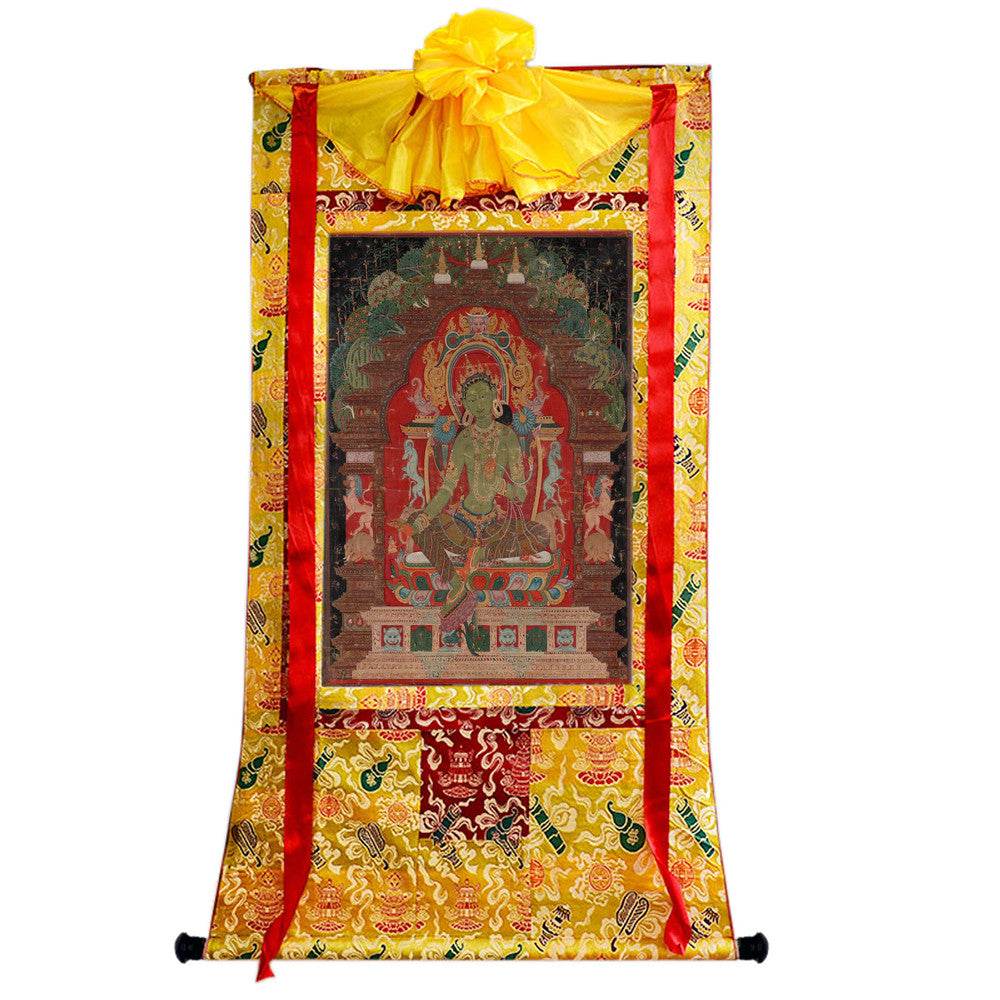Green Tara - 13th Century
Green Tara - 13th Century
Couldn't load pickup availability
❤This series thangka comes from the Kathok Monastery,made for belivers and blessed by lama.
The original version is from the 15th century,painted on cotton with ground mineral pigment.
The pattern is printed on Tibetan cotton,the frame is hand framed by Tibetan craftsmen.
❤DETAILS
Material:Mineral Pigment,Canvas,Cotton
Print type:giclee printed
The front is covered with silk to protect Thangka
With exquisite wooden painting shaft and lanyard
❤FRAME SIZE
Height:120cm / 47.2"
Top width:66cm / 26"
Bottom width:82cm / 32.3"
Core Size: 60cm(Height) 40cm(Width) * (about 23.6" * 15.8")
❤DIFFERENT FRAME COLORS for choose
There are a total of 8 different colors for you to choose, please select the color number when you purshace.
Frames of different colors may vary in size, please understand.
Tara (Sanskrit: तारा, tārā; Standard Tibetan: སྒྲོལ་མ, dölma), Ārya Tārā (Noble Tara), also known as Jetsün Dölma (Tibetan: rje btsun sgrol ma, meaning: "venerable mother of liberation"), is an important figure in Buddhism, especially revered in Vajrayana Buddhism and Mahayana Buddhism. She appears as a female bodhisattva in Mahayana Buddhism, and is considered to be the consort or shakti (power) of Avalokiteshvara. Tārā is also known as a saviouress who hears the cries of beings in saṃsāra and saves them from worldly and spiritual danger.
In Vajrayana, she is considered to be a Buddha, and the Tārā Tantra describes her as “a mother who gives birth to the buddhas of the three times” who is also "beyond saṃsāra and nirvāṇa." She is one of the most important female deities in Vajrayana and is found in sources like the Mañjuśrīmūlakalpa, and the Guhyasamāja Tantra. Key Indic Vajrayana texts which focus on Tārā include the Tantra Which is the Source for All the Functions of Tārā, Mother of All the Tathagatas (Skt. Sarvatathāgatamātṛtārāviśvakarmabhavanāmatantra) and Tārā’s Fundamental Ritual Text (Tārāmūlakalpa).
Tārā remains a popular meditation deity (yidam) in Tibetan Buddhism and she is also revered in Newar Buddhism. Tārā is considered to have many forms or emanations, and there are several traditions which list twenty-one Tārās, each with different colors, implements, number of faces and arms and activities such as pacifying (śānti), increasing (pauṣṭika), enthralling (vaśīkaraṇa), and assaulting (abhicāra). The green (or "blue-green", Skt. śyāmatārā) form of Tārā remains the most important form of the deity in the Tibetan tradition. A practice text entitled Praise to Tara in Twenty-One Homages is the most important text on Tara in Tibetan Buddhism and is the source for the various traditions which list twenty one forms of Tārā (aside from the main green form).
The main Tārā mantra is the same for Buddhists and Hindus alike: oṃ tāre tuttāre ture svāhā. It is pronounced by Tibetans and Buddhists who follow the Tibetan traditions as oṃ tāre tu tāre ture soha. The literal translation would be "Oṃ O Tārā, I pray O Tārā, O Swift One, So Be It!"


























